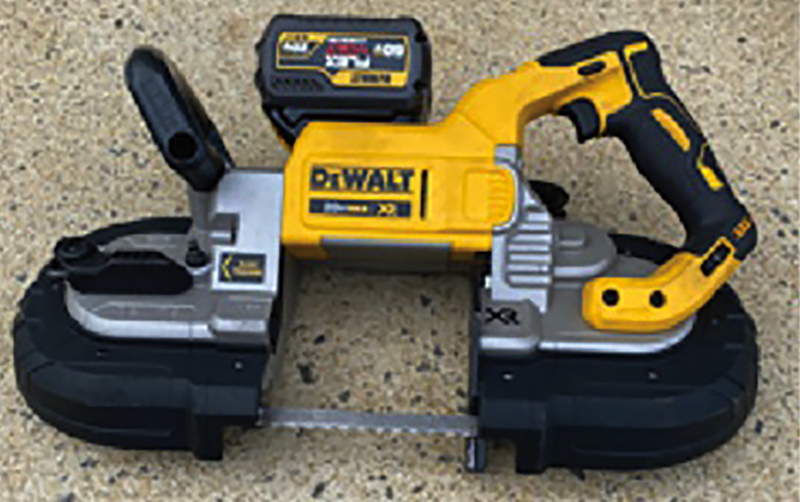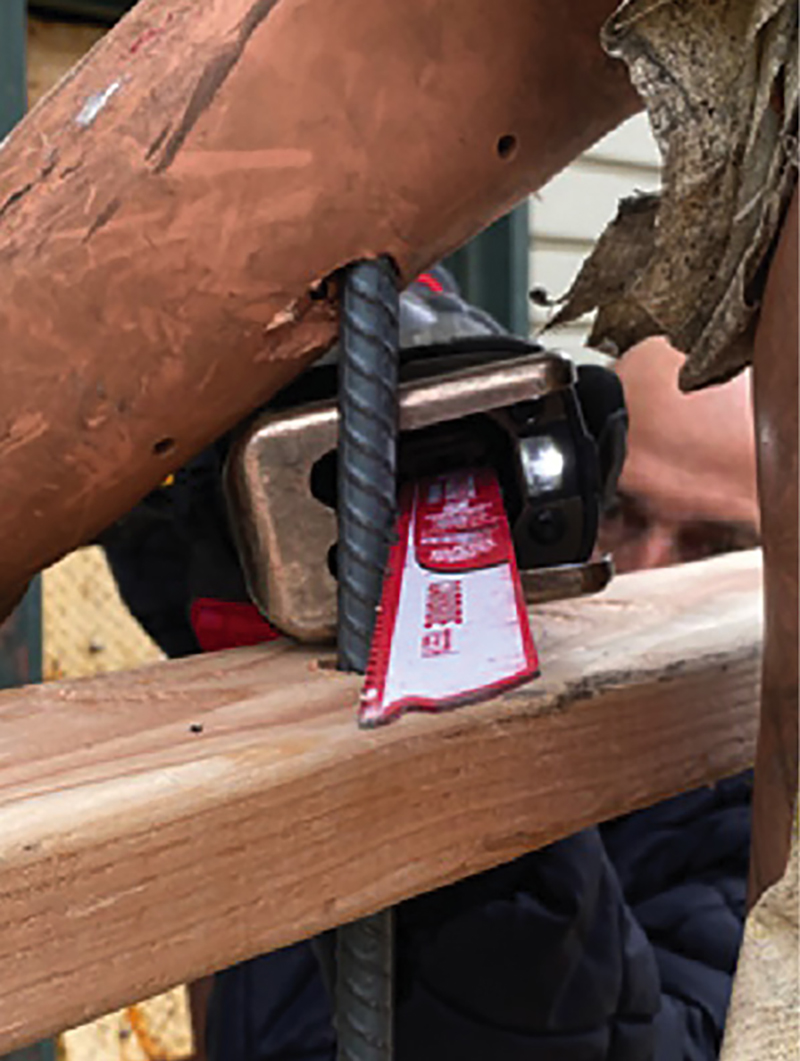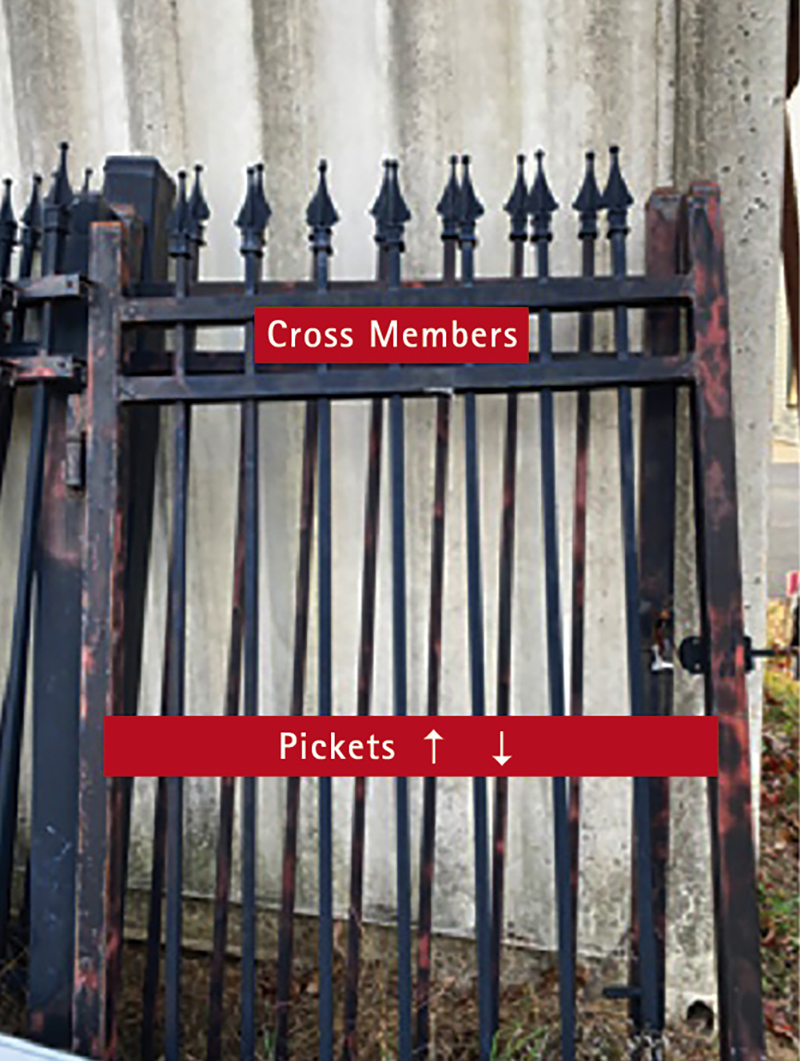THE RESCUE COMPANY ❘ MARK GREGORY
It appears to be a routine day tour—a couple of runs throughout the day, followed by some drilling on the new Man vs. Machinery kit. As lunch is about to be served, the company is toned out for an “unknown trauma incident” to the rear of one of the local housing projects. During the response, dispatch advises that a male fell from a second-story window and is impaled on a wrought iron fence.
On arrival, the officer and irons firefighter perform a scene size-up. Emergency medical services (EMS) personnel are already tending to the patient, and advanced life support measures are in place. Police have secured the area around the patient. The male is conscious, with his left femur impaled on a wrought iron picket. He is currently being supported by bystanders and EMS personnel.
- Construction Concerns: Impalement Hazards
- IMPALEMENT EXTRICATION
- Impalement Response Considerations
- Training Minutes: The Effects of Different Tools During Impalement Rescue
Securing the Patient
As the company officer, the information you have processed so far as well as your prior experience with these incidents dictate your next course of action: securing the patient. There are several methods you can employ. You can establish a high-point anchor and you can support the patient with a webbing body harness (photo 1). The scoop stretcher is another option that members of your company have used in the past. The ability to “split the stretcher” around the fence pickets and cross beams can be beneficial to stabilizing your patient. Your tool of choice for this incident is a multipurpose ladder (photo 2). You can use it as a platform to stabilize the patient at various heights.

(1) Photos by author.

(2)
You order the members to place the multipurpose ladder parallel to the fence with a backboard resting on it to stabilize the patient in the supine (on his back) position. You position the multipurpose ladder and backboard slightly lower than the top of the fence to aid members with room to disentangle the patient. Backboard straps secure the patient to the board.
Disentanglement: Tools of Choice
With the patient secured to a stable platform and medical interventions in place, it’s time to decide which tool to use for a successful extrication. The truck company officer working alongside you calls for one of his members to bring over the battery-operated cutter. You confer with the officer and advise him that the cutter is not the tool of choice for this incident. From prior experience, you know that the cutting/shearing of metal will cause this tool to torque (photo 3). This torquing motion can cause the patient further injury and pain. Instead, you choose the battery-powered band saw.

(3)
The battery-powered band saw has been a fantastic addition to the rescue world and comes in either a battery or an electric version (photo 4). The tool does not emit much noise as it operates, which is a plus for the patient psychologically during the disentanglement. Keeping the patient as calm as possible during these incidents will be a benefit to his care as well as to the environment in which your responders are operating.

(4)
The band saw is a controlled cut. Unlike tools such as the right-angle grinder, reciprocating saw, or cut-off saw, the band saw creates a minor vibration. Heat dissipation is also minimal since we are not using a portion of the blade to cut but the entire length of the band. The end cut from the band saw will also be a smooth cut, which is critical for trauma center personnel. Tools such as right-angle grinders and cut-off saws can leave a pointed edge on their finished cut. Reciprocating saws and hydraulic/battery cutters leave a jagged edge to their cut (photo 5), which can create potential ripping and tearing hazards for trauma center personnel, causing additional internal injuries. The band saw cut is smooth, which will greatly aid in the object removal with little to no additional injuries from the removal process.

(5)
Having a second band saw ready to go is also a “heads up” move because the band can snap or wear during the operation. Having a second band saw and spare batteries, if using a cordless saw, will allow you to maintain a continuous operation with minimal downtime.
Disentanglement Time: The Cuts
The team has methodically performed all the steps necessary to continue working toward a successful disentanglement. The patient is secured, medical interventions are in place, and the necessary tools to get the job done are on scene. Now, you must decide where to make the cuts to free the patient with the cordless band saw.
The wrought iron fence (photo 6) is composed of cross beams and pickets. The pickets do not support the weight of the fence—cross members do. If the cross members are cut prior to the pickets, twisting can occur as well; the weight of the fence and the patient will now require reinforcing. This will involve the assistance of additional members, which can hinder the operation. So, remove the pickets first, followed by the cross members.

(6)
Cutting operations commence. The tool operator is guided by your call. The decision has been made to cut a section of fencing that is slightly larger than the impaled area. This is because of access issues with the cross member and from working so close to the patient.
The pickets have been successfully cut. Now, it’s time to cut the cross members. You must address the weight of the fence with the patient attached. The cuts will be quick, and the members must get a secure hold on the patient/backboard, which will also be supported by the multipurpose ladder. The cuts are made, and the patient is now free. The cut section of fencing is secured with the patient for transport to the trauma center.
The Job Is Not Complete
The patient has been freed from the fence and is now being prepared for transport by the ambulance. As a seasoned boss in the extrication world, you know the job is not yet complete.
Prior to the patient being removed from the fence, you delegated another officer to ensure that transport can be attained. The measurement of the cut section of fence must be addressed. The patient must have proper clearance to be transported on the stretcher from the side wall of the ambulance. If this is an issue, one option would be to transport the patient on the stretcher feet-first rather than headfirst or use the bench wall position for transport.
The patient is successfully loaded into the ambulance, and your company follows hm to the trauma center in case your services are required further. On examination by the trauma physician, he determines that the fence can be removed safely in a surgical procedure with no additional injuries incurred. The patient will make a complete recovery.
Post-Ops Critique
Your crew members as well as the other companies involved (EMS included) performed admirably. Thus, it is a good idea to conduct a post-ops critique. Go over the entire operation. Why were certain procedures performed? What was the reasoning behind the tools used? Would other tools or techniques have been advantageous to use? Share the results of the post-ops critique with other shifts to provide them with the plan/ideas necessary to repeat a successful outcome.
Drilling is the key to success. Although these responses may be rare for your department, rescuers must be prepared to handle the variety of situations they may face. A simple tool familiarization drill will allow rescuers to understand the pros and cons of the various tools we carry.
Also, review tool maintenance procedures. All members should be able to perform routine maintenance on tools at the scene, if required. The changing of the band saw blade is a great 10-minute drill. Another great drill would be to demonstrate the proper way to cut with the tool.
Keep in mind that some members will be involved in the disentanglement process, some in safeguarding transport, and others in trauma center ops. All members should be familiar with all areas of the rescue to ensure the best patient care possible.
MARK GREGORY is a 35-year fire service veteran and a 31-year veteran of the Fire Department of New York (FDNY). He is the captain of Ladder 176 and previously served as a captain in Tower Ladder 142, Divisions 13 and 15; a lieutenant in Tower Ladder 111; and a firefighter in Rescue 2 and Ladder 132. Gregory instructs at the FDNY and Suffolk County fire academies as well as nationally as a lead instructor with P.L. Vulcan Fire Training.
Mark Gregory will present “Man vs. Machinery” on Monday and Tuesday, April 25-26, 8:00 a.m.-12:00 p.m. and 1:30 p.m.-5:30 p.m., and “Man vs. Machinery: Are You Prepared?” on Wednesday, April 27, 10:30 a.m.-12:15 p.m., at FDIC International 2022.

